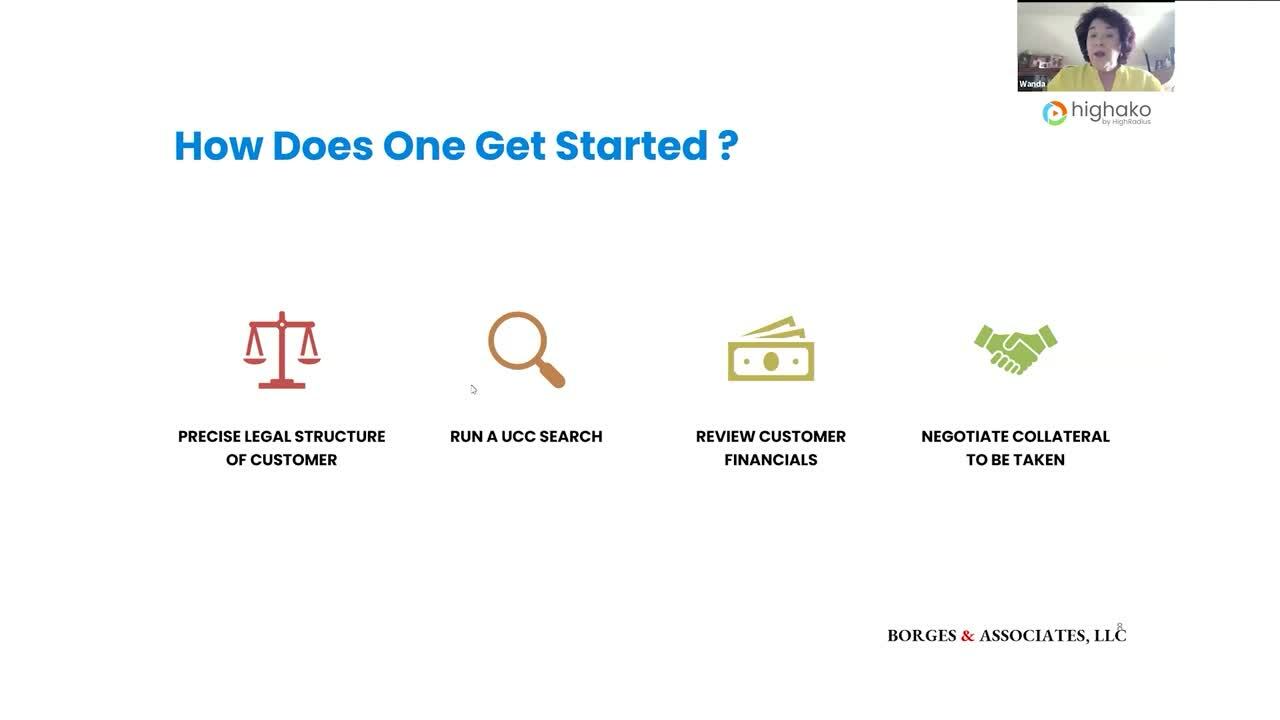

The ability to quantify risk across your entire accounts receivable portfolio is critical to your ability to assume a proactive rather than a reactive credit management strategy. The greater your understanding of the risk associated with your AR, the more strategically you can allocate resources and set priorities. As the risk parameters then shift, so can your tactics within the strategic framework you have established.
If all you do when managing risk is set to credit limits and track account balances, there is little you can do other than react to the exceptions (e.g., accounts over the limit or past due). Instead of developing a strategic approach to AR portfolio management, you end up merely responding to the exceptional items that cross your desk each day. The problem with this is that non-strategic issues (at least when you take a step back and look at the big picture) will tend to dominate much of your time, further limiting your ability to have a substantial impact on AR quality. AR performance will then be primarily dictated by the course of business as opposed to any leadership you can provide as credit manager.
In contrast, proactive risk mitigation aligns priorities and resources with AR performance goals. The early identification of changing risk patterns will help you establish remedial actions designed to ensure performance goals are met both short- and long-term.
On the credit approval side of the equation, this is done by either tightening or loosening credit policy. From a collections perspective, it is a matter of adjusting the frequency and tenor of collection activities with regard to the risk-denominated exposure of the various segments of your AR portfolio.
Establishing Risk Guidelines for Credit Approval Policies
One of the key benefits of any credit scoring regimen is the ability to rank your customers from high to low. Having done that, it is then easy to see if the risk ratings you've set up follow a typical bell curve pattern or are skewed in any way toward either extreme. Then it is a simple matter of using the credit scores to align approval guidelines with your corporate risk tolerance. Figure 1 illustrates how this might be done for conservative, moderate (standard), and liberal (aggressive) credit policies.

Figure 1: Using Credit Approval Scores to Set Credit Policy
There are a number of advantages to using credit scores this way:
- Higher Productivity -- By relying on the credit score to trigger the approval decision you save considerable time that would otherwise be spent on credit analysis. Instead, more extensive credit analysis is focused on the marginal accounts that require additional review.
- Greater Consistency -- When credit analysis is performed on one customer at a time, analyst bias will be reflected in the outcomes over time. When the analysis is performed within a scoring framework, this becomes less of an issue.
- More Good Decisions -- Credit scores are most highly predictive at both ends of the spectrum. This is because on a relative basis, low- and high-risk customers are easily identified. Assuming a standard bell curve, scores that fall into the top two quartiles (low and moderate risk), as well as the bottom quartile (high risk), generate a high probability of a good decision. The problem is with the third quartile (marginal accounts). Studies have shown that when additional credit analysis is applied to those marginal scores, more good decisions are made than if you used either credit scores or credit analysis alone.
- Reduced Credit Information Costs -- Very simply, credit scores cost less than credit bureau reports. Most of the time, with new customers, a score will be all you need to justify your decision and so you will only buy a full credit report if the score is marginal or the dollar amounts are large. The same principle applies to portfolio monitoring. It is time-consuming and costly to perform an annual credit review of every active customer, but by periodically scoring your entire AR portfolio you will identify those accounts that require more investigation:
- marginal and high-risk accounts,
- those with increasing risk scores, and
- large customers.
It deserves note that the lower your average invoice value, the more likely you are to benefit from credit approval policies that rely heavily on credit scores. But when invoice amounts and credit limits exceed $100,000, it is advisable to rely on more than just the credit score for your decisions. Looking at it another way, credit scores are usually very appropriate for the 80 percent of your customers who will provide only 20 percent of your revenues. That allows you to devote more credit analyst attention to your largest customers, who contribute the bulk of your revenue.
Risk-Based Collection Strategies
Ranking customers by risk also provides a framework for building collection strategies designed to achieve optimal results for your collection resources. It would be nice to rely entirely on collection calls, but most credit departments lack the personnel to effectively call all their past-due accounts in a timely manner. Rankings allow you to segment your past-due accounts by risk and exposure, and then assign appropriate collection strategies to each segment.

Figure 2: Determining Credit Strategy Based on Risk and Exposure
Figure 2 provides a simple scheme that illustrates the different collection emphases that can be assigned to each AR portfolio segment, which have been characterized by both risk and exposure. By sending a series of automated dunning notices to low-risk/low-exposure accounts, the collection staff is freed up to make more critical collection calls.
Likewise, a series of dunning notices are sent to high-risk/low-exposure accounts before a call is made in the hope they will "self-cure" (pay). This allows calling volume to be focused on the high-risk accounts, especially those with high dollar exposure.
Risk-based collection strategies facilitate:
- a reasonable basis for comprehensive coverage of each AR portfolio category,
- boost collection productivity,
- increase cash flow, and
- reduce overall portfolio risk.
You reduce your overall risk because your greatest efforts are focused on high-exposure/high-risk accounts, exactly as they should be. Not only does the effective implementation of risk-based collection strategies reduce the past-due dollars in each aging bucket (exposure), but it also tends to reduce the risk quotient of each past-due dollar.
Measuring Portfolio Risk
When you rank your customer base using a risk score, the first thing you will notice is the distribution of risk throughout your AR portfolio. This distribution and your tolerance for risk will determine what scores you then classify as low, medium, and high risk (see Figure 1).
For practical purposes, it is recommended that you attach a risk classification to each account and segment your AR using three to five graduated risk classifications that each correspond to a range of credit scores. Once you have assigned risk classifications to each customer, you can begin to generate metrics that quantify and monitor the risk quotient of your AR portfolio.

Figure 3: Risk-based Calculation of Required Bad Debt Reserves
Figure 3 is an excellent example of what you can do, in this case using risk classifications and historical bad-debt write-off percentages to calculate bad-debt reserves. This type of chart also provides a point of comparison for future bad debt analysis and risk trends. Your credit and collection efforts will necessarily require adjustments and modifications whether risk rises, due to more accounts and dollars falling into the higher risk classifications (#4 and #5), or if risk decreases because more accounts and dollars have accumulated in the lower risk classes (#1 and #2).
Traditional credit management that relies on customer-by-customer risk analysis and credit limits is unable to clearly see changes in the risk quotient associated with the entire AR portfolio.
The use of credit scoring models and associated risk classifications eliminates this fog of uncertainty, allowing proactive credit executives to make much better credit and collection decisions, both tactical and strategic, in response to a dynamic risk environment.
 |
Editor
|

|
 |
 |
|||||||||||